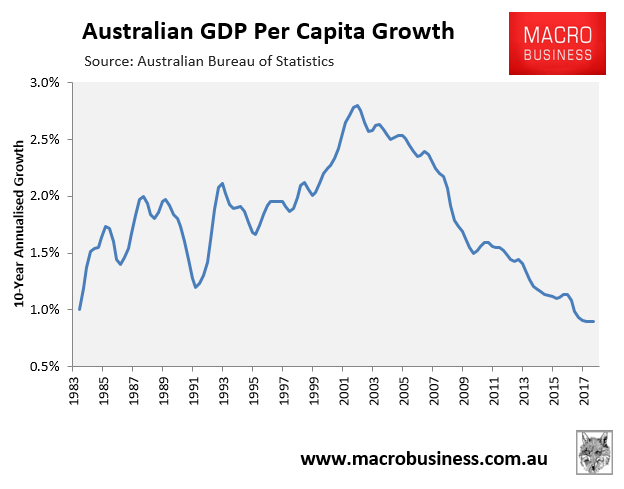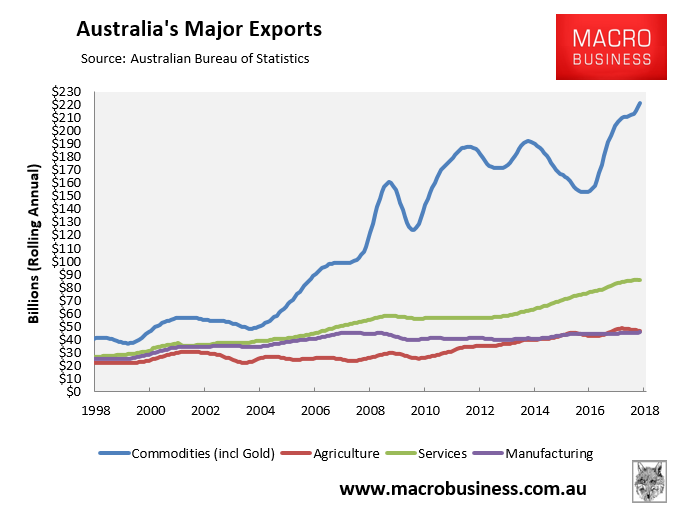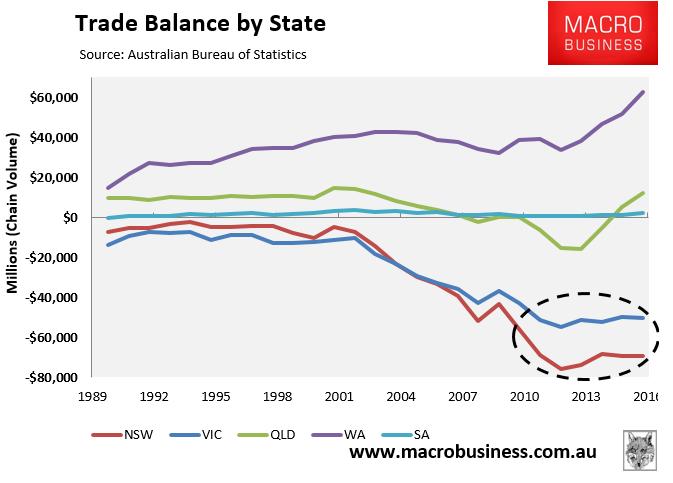RBA boffin Professor Ian Harper once again spruiked the riches that supposedly come from Australia’s mass immigration ‘Big Australia’ policy at yesterday’s Melbourne Institute/The Australian Economic and Social Outlook Conference:
Speaking at the Melbourne Institute/The Australian Economic and Social Outlook Conference, Mr Harper said raising productivity, with a key focus on making cities accessible and liveable, was how to achieve the “holy grail” of economic policy of both growth and equity.
“Migration of course is right at front and centre here. We benefit an enormous amount from migration,” he said…
“It’s no longer the case…that Australia is a great quarry and farm,” Mr Harper said.
“The bulk of Australia’s growth is being driven by services….in our great cities,” he said, noting that 80 per cent of economic output is produced by cities.
“What drives productivity growth…is innovation,” Mr Harper said. “The source of this creativity…is when we are together. When we stimulate each other. The more diverse we are…the more creative we are,” he said.
“These are the debates that are presently live for us.”
“Importantly, in my view, we need to make our cities work. What matters for us is how we manage the accessibility and the liveability of our cities,” he said.
As I noted last week, this is daft closed economy thinking by Harper. The world has 7.4 billion people. We don’t need to import them to sell to them.
Sure, cutting immigration would lower aggregate economic growth, since less inputs in people means less outputs in GDP. So what? It’s not like Australia’s growth in GDP per capita would be effected, which has collapsed since the immigration floodgates were thrown open:

Lowering immigration would also reduce one of the major drags on productivity: rising infrastructure bottlenecks and congestion; would lower the Australian dollar (other things equal), rebalancing the economy away from ponzi growth towards productive tradeable growth; it would help to lift wages; and would improve Australia’s current account, since Australia would import far less and the nation’s mineral wealth (and exports) would be shared among less people:

On the last point – the current account – notice below how “our great cities” of Sydney an Melbourne have driven gigantic trade deficits?

Basically, all the extra migrants that have flooded into these two cities have barely lifted exports, since these cities don’t actually produce much that is tradeable. By contrast, imports have skyrocketed via more purchases of consumer goods like flat screen TVs, cars, furniture, etc. These net imports must be paid for, either by increasing the nation’s debt or via selling-off the nation’s assets. We’ve been doing both.
The truth is mass immigration promotes ‘dumb’ growth, concentrated in urbanisation and household debt, and associated sectors benefit (think Highrise Harry and Gerry Harvey). This has its limits, as we are already seeing in debt stress everywhere and declining liveability, as it benefits the few over the many.
But it’s not the preferred model of growth. Far from it. Productivity enhancement and competitiveness are a better model over the long run as they lower debt while boosting incomes per capita, are more meritocratic, and will send the 40% of the economy that is tradeable into overdrive.
Once immigration is cut there’ll be an adjustment period while the real exchange rate tumbles. But the Australian economy will be far better off in the medium and long term, as will living standards.

